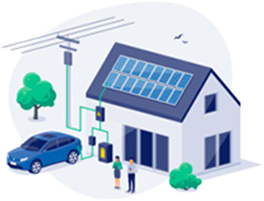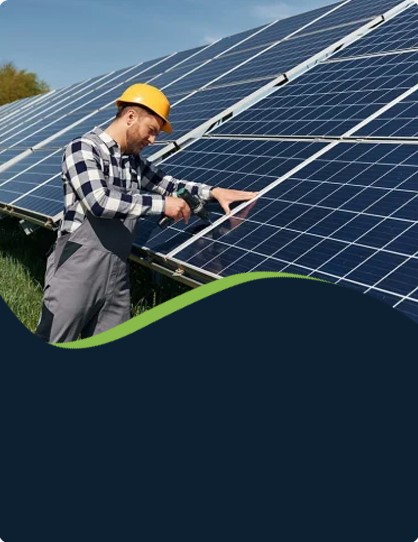
-
[email protected]

-
Building 1, No. 21 Shengfa Road, Lucheng District, Wenzhou, Zhejiang, China


A combined wind and solar energy system harnesses the power of both wind turbines and solar panels to generate electricity. Solar power generation is dependent on sunlight, which can fluctuate due to weather conditions and the time of day. Wind energy, on the other hand, is influenced by wind patterns, which can also be inconsistent.
In a combined wind and solar energy system, both the wind turbines and solar panels are connected to a single power grid or battery storage system. The energy generated by both systems is either stored in batteries or fed directly into the grid, depending on the setup. When the wind is not blowing or the sun is not shining, the other source can continue to produce power, ensuring a consistent energy supply. Additionally, energy storage systems like batteries can store excess power generated during peak times for later use.

A hybrid control system is often employed to manage the operation of both systems. This system ensures that the energy production from both sources is optimized, taking into account factors such as wind speed and solar intensity. It can also prioritize which energy source to use based on availability, ensuring the most efficient use of resources.
One of the main advantages of a combined wind and solar system is the ability to balance power generation. While solar energy is abundant during sunny days, wind energy can be more consistent at night or during cloudy weather. This hybrid approach improves the reliability of power supply, especially in regions where one energy source may not always be available.
Both wind and solar power are renewable energy sources that produce little to no pollution. By combining these systems, the environmental impact of power generation is further smalld. Reducing reliance on fossil fuels helps mitigate climate change and reduces greenhouse gas emissions.
Combining wind and solar energy can lower the overall cost of energy production. Solar and wind energy technologies have become more affordable over the years, and by integrating both systems, the upfront costs of installation can be reduced. Furthermore, the use of energy storage systems allows for more efficient energy use and potentially lower electricity bills.
A combined system enables greater energy independence, especially for off-grid communities or remote locations. By relying on local wind and solar resources, communities can reduce their dependence on external power supplies and become more self-sufficient.
While the costs of wind and solar technologies have decreased, the initial investment in a combined system can still be relatively high. The installation of both wind turbines and solar panels, along with the necessary infrastructure and energy storage systems, can be expensive, though this cost can be recouped over time through savings on energy bills.
Maintaining a combined wind and solar energy system requires regular monitoring and upkeep. Both wind turbines and solar panels have specific maintenance needs, and ensuring that both systems are operating efficiently requires ongoing attention.
The effectiveness of a combined system depends heavily on the geographical location. Areas with low wind speeds or insufficient sunlight may not generate enough power to make the system feasible. Therefore, careful site selection and assessment are essential before installation.
Combined wind and solar energy systems offer a promising solution to the challenges of sustainable energy production. By integrating two renewable energy sources, these systems provide a more reliable, efficient, and environmentally friendly way to meet electricity demands. While there are challenges associated with the initial cost and maintenance, the long-term benefits of reduced environmental impact, energy independence, and cost savings make this an increasingly popular option for both residential and commercial energy production.
Your email address will not be published. Required field are marked*
